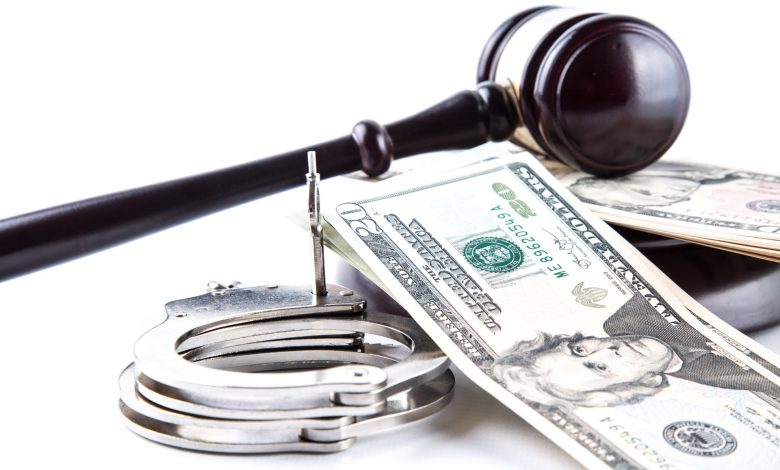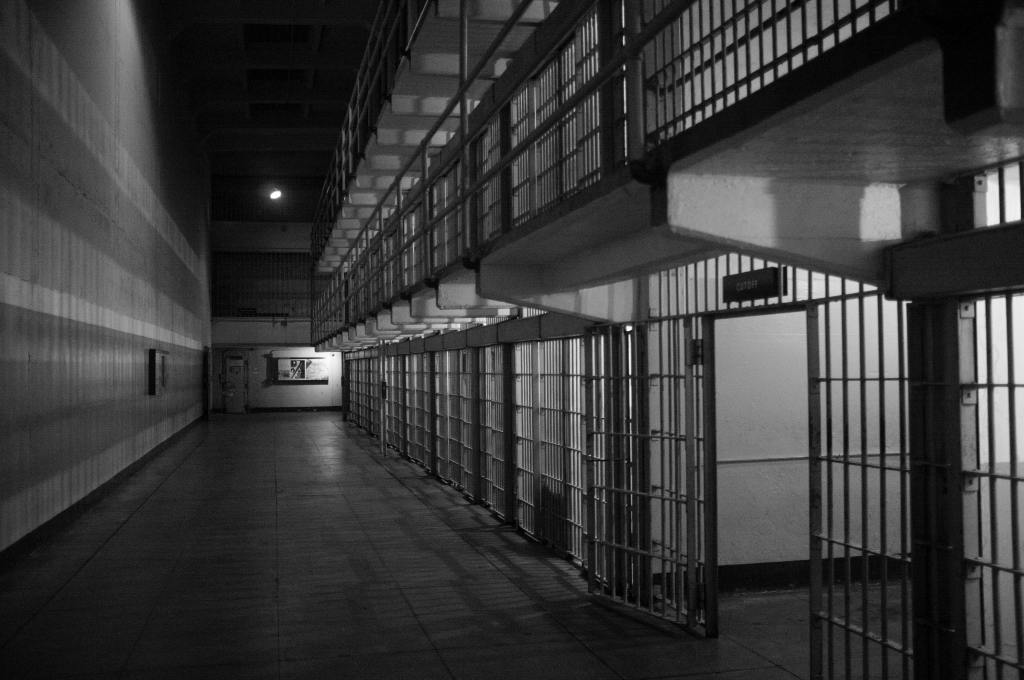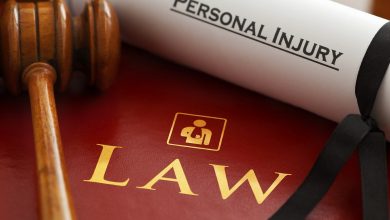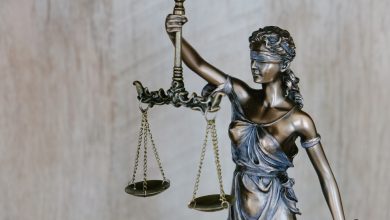How Does the US Bail System Work?

Upon being arrested and having the initial hearing, the judge will decide if a suspect is a danger to society or themselves, as well as consider how likely it is that the defendant will come to their court hearing. This will determine if bail can be posted – and if so, how much. However, the practice has mixed opinions, as some note its disadvantages, but others insist that it’s a necessary component of the legal process to hold defendants accountable. To get the full idea of the system, it’s best to look through its history, reforms made, current praises and criticisms, and what rights a defendant has through the whole process.
What Is Bail?
Bail is a cash amount that must be paid to the courts in order to be released from jail in the period between being arrested and the trial. After all hearings and appearances have been attended, the bail is returned to the defendant. The amount of bail is typically determined by the type of crime committed and the defendant’s criminal record, but other conditions considered – as stated before – include if the defendant is suspected to be dangerous or accused of a particularly violent crime, as well as how much the judge thinks it’ll take to be sure they show up to all required appearances.
What If You Can’t Afford Bail?
Those who can’t afford to pay their full amount of bail, which can sometimes be hundreds of thousands of dollars, have a couple of options. The first, one that probably isn’t available to most people, is to borrow the money from a family member or friend. If this isn’t possible, there is a whole business set up to profit off this exact situation.
Private bail bond companies will agree to pay the full bail for the defendant, but they require a fee – except this one is nonrefundable. They will typically require the defendant to post at least ten to fifteen percent of the full amount, and they will also likely require some kind of collateral, such as a car, house, jewelry, or anything else worth the amount of bail. These requirements are to make the risk worth taking; if the defendant doesn’t show up to their appearances as agreed, the bail bondsman will be responsible for the full bail amount. The collateral will be used to regain what they lost in the process.
If this is the route a defendant wants to take, they need to either contact a bail bondsman themselves while in jail or contact a family member or friend who can make the arrangements for them. If the defendant has a lawyer already, then they can give their legal expertise in deciding what the best option is and will likely be able to recommend bail bond companies their clients have had success with. If possible, it’s best to read reviews about the companies before doing business with anyone to be sure this company is trustworthy. Be wary of any deals that sound too good to be true.
Additionally, the defendant may be able to put a piece of collateral up directly to the court in substitute for their bail. This will put a lien on the collateral that will be removed once all appearances have been attended.
If none of these are options, then the defendant is going to be forced to wait in jail until their hearing. Unfortunately, even though everyone has the right to a fair and speedy trial, some waiting periods can be pretty lengthy, especially for serious cases that involve a lot of gathering of evidence and other time consuming tasks. The defendant will want to be sure that their lawyer has had sufficient time to prepare their case, yet doesn’t want to stay in jail longer than necessary.
In some cases, the judge may make other arrangements, however. They do have the option to release the defendant on their own personal recognizance or on a citation. These are typically reserved for nonviolent, smaller crimes though. Additionally, this release will probably come with some conditions that the defendant must live by or risk being sent back to jail to await their trial. Some of these stipulations include:
- Not break any other laws
- Not use alcohol or drugs
- Complete drug testing
- Stay away from people and situations that may get them into trouble
- Report to an officer or the court as required
- Not leave a predetermined city, state, country, etc.
- Attend drug rehabilitation or counseling if necessary
Additionally, if the defendant feels that the bail amount is excessive for the crime and their circumstances, they can appeal it.

History of the Bail System
The bail system in America is not a new concept. Habeas corpus is a large part of what guarantees rights to those being detained, which was originally an English law that was incorporated into the creation of the US judicial system. While England’s Statue of Westminster the First of 1275 allowed for bail up until here as well, the Habeas Corpus Act of 1679 ensured defendants kept in the English legal system would have bail set for them by a magistrate, as well as provide other protections to those being accused of a crime. It explains that: “within two days after the party shall be brought before them, the said Lord Chancellor or Lord Keeper, or such Justice or Baron before whom the prisoner shall be brought as aforesaid, shall discharge the said prisoner from his imprisonment, taking his or their recognizance, with one or more surety or sureties, in any sum according to their discretions, having regard to the quality of the prisoner and nature of the offense, for his or their appearance in the Court of the King’s bench the term following.” It should be noted the various rights their prisoners had which the US judicial system also affords, such as:
- A limit on how long they can be held
- The expertise of a judge determining the bail amount
- The chance for the defendant to be released upon posting a surety that they will return to any following appearances
- The bail amount shall match the crime and criminal history
This Act came in response to many judges attempting to withhold bail from defendants, so once they were ordered to do so, the judges began setting bail so high that it couldn’t be met. To prohibit this, the Bill of Rights of 1689 outlawed that practice as well.
In the American Constitution, these rights are outlined in the Judiciary Act of 1789, which explains, “Upon all arrests in criminal cases, bail shall be admitted, except where punishment may be by death, in which cases it shall not be admitted but by the supreme or a circuit court, or by a justice of the supreme court, or a judge of a district court, who shall exercise their discretion therein.” This basically just ensures that all defendants are given the chance to post bail, but doesn’t give much as far as specifics or providing any other protections. However, a few years later in 1791, the Eighth Amendment provided a few more rights to those being held in the American judicial system, guaranteeing that “excessive bail shall not be required, nor excessive fines imposed, nor cruel and unusual punishments inflicted.” But what is considered excessive? For the government, bail should only be the amount required to serve its purpose: to ensure the defendant attends all appearances.
From that time until 1966, not much changed regarding bail in America. In this time, they had found two major problems with the bail system: there were too many people stuck in jail just because they couldn’t afford bail, and they felt uneasy releasing some more violent or unreliable defendants, even on bail. The Bail Reform Act of 1966 addressed this by allowing non-capital offenders to be released on their own personal recognizance. In the cases where they weren’t sure they would show up on their own, judges were to assign the least restrictive conditions, such as travel restrictions. However, they were only allowed to consider how likely the defendant was to return to court, not the danger they could prove to society if they were actually guilty and released.
The Bail Reform Act of 1984 changed that; this Act requires judges to also consider the risk posed to society. Some debated if this was constitutional, but it was upheld in the Supreme Court by United States v. Salerno. The Act also included a distinction that there are some with multiple felony convictions, violent offenders, and various other circumstances in which a defendant cannot be granted release on bail.

Current Discussion on the US Bail System
The bail system in America has its critics. These critics take problem with the fact that, even though the law seems to hold that no one should be held in jail simply because they can’t afford bail, for many, this is exactly their case. Some defendants truly can’t even afford a $500 bail bond and are instead forced to wait in jail until their trial. Critics also note that the system tends to particularly disadvantage minorities, as Black and Latino men pay 35 percent and 19 percent higher bail amounts, respectively. In 2013, New York City had 54 percent of their offenders remain in jail until the end of their trials because they couldn’t afford bail of $2,500 or less. 31 percent of them were non-felony inmates with a $500 bond or less. On a national level, 38 percent of inmates defending felony charges will remain in prison for their entire pretrial period, but only one out of ten of these is because the defendant was denied bail. The other nine will remain because they can’t afford bail.
For some, the damages of being stuck in jail for pretrial are detrimental. Defendants may lose their employment, housing, custody of children, have their relationships suffer, or not have the ample time or resources to fully prepare for their case. In fact, those who have to stay in jail until their case has been fought have a higher chance of being convicted. A Princeton study explains the several reasons why this may be the case. For one, those who are detained are more likely to be presented and accept a less favorable plea bargain or just plead guilty. Defendants that are released before trial are also more likely to get a reduction in their charges or a decrease in the amount. They explain that, “pre-trial release improves case outcomes primarily through a strengthening of defendants’ bargaining positions.” They also find that defendants are more likely to have their employment unaffected or be able to find employment after release.
Supporters of the bail system will argue that it is a necessary component of our judicial system in order to ensure that guilty offenders won’t escape or commit crimes while released before trial. It is their belief that judges are already considering their defendant’s financial capabilities when setting bail, as the law requires, and as such, the bail system is not flawed and rather protects innocent citizens. They also argue that crime increases when bail is restricted; however, this doesn’t seem to be the case. In fact, New York, who reformed their bail system recently to allow 91 percent of defendants to be released on pre-trial, has seen lower crime rates, and a reported crime wave appears to be fabricated.
Overall, it seems many states, particularly more liberal ones, are having the conversation about the effects that their bail system has on their citizens and what they can do to reform it.

Recent Reforms
Several states and cities have made large reforms of their bail systems, some abandoning the concept all together.
California
California was the first state to completely end their cash bail system, back in 2018, after a state appellate court ruled the practice unconstitutional. Instead, they use an algorithm to put individuals into risk categories that look like this:
- Low-risk: Release with least-restrictive, non-monetary requirements
- Medium-risk: Release or hold
- High-risk: Remain in custody until hearing
There is still contention over whether this was the best decision, as some argue that even the risk category system can be biased, and others believe cash bail is necessary for the safety of a community.
New York
As mentioned before, New York has made some recent changes to their bail system. A law that went into effect January 1, 2020 gave judges the option to allow the defendant to go free until their trial without posting bail in 91 percent of arrests. These are mostly misdemeanors and non-felonies and order the judge to not require bail. Instead, they will have some kinds of conditions, as discussed earlier, like supervision and travel restrictions, even allowing for defendants to get text message court date reminders and other modern alternatives to being held until trial. They are still required to consider the inmate’s likelihood of returning for court and not posing a danger to society.
However, critics have claimed that it has led to an increase in crime; although, there doesn’t seem to be much reliable data to support that, so the jury is still out on whether New York is having success. Still, calls for revisions were answered, and New York added more crimes to the list of ones that require a cash bail. The original list included:
- All violent offenses
- Sex offenses
- Witness tampering
The revision added:
- Second-degree burglary when entering living area of home
- Certain sex-trafficking offenses
- Obscene sexual performance of a child
- Some assaults
- Vehicular assault
- All charges that involve causing someone’s death
They are also able to consider the defendant’s criminal history and provide more release conditions, such as limiting their contact with certain people, attend therapy, or revoke their passports. They will improve their data-keeping this round and see exactly what affect these measure have on their judicial system.
Philadelphia
As of early 2018, Philadelphia no longer requires bail for a number of misdemeanors and low-level felonies – 61 percent of their cases. They reported a year later that no increase in crime occurred, and their court appearance rate was higher than it had been in a decade.
Alaska
This reform, which went into effect in 2018, is essentially the same as California’s. However, like New York, Alaska also had crime rates that concerned the public, causing the new governor to walk back this change. The new bill allows the following:
- Judges evaluate risk factors
- No need for clear evidence to justify a monetary bail
- One bail review hearing to show they truly cannot afford bail
New Jersey
This state basically removed the cash bail system in January 2017, as 40 percent of their prison population was there simply because they couldn’t afford bail. Now, defendants are only held on bail if they are a serious, proven risk to society, using an assessment to determine the risk factor. They now report that individuals released pre-trial are no more likely to not show up to court or commit a crime while awaiting their hearing.
Washington D.C.
Washington D.C. even preceded California here, essentially eliminating their bail system in the 90s. They also use a risk assessment, and their results show that 88 percent of defendants attend all court hearing and 86 percent are not arrested again for any type of criminal offense.

The System: A Necessary or Unnecessary Evil?
While the bail system is deeply rooted in the American judicial system, many doubt its effectiveness and insist it does more harm than good. Still, others insist that it is needed to ensure the safety of our communities. It is likely to continue to be heavily analyzed over the next few years, especially as discussions are being had about reforming other aspects of our judicial system. If you find yourself or a loved one in need of posting bail but lack the financial ability to do so, there are many resources and foundations that can provide the support you need. If necessary or possible, speak to your lawyer about what options you have.



